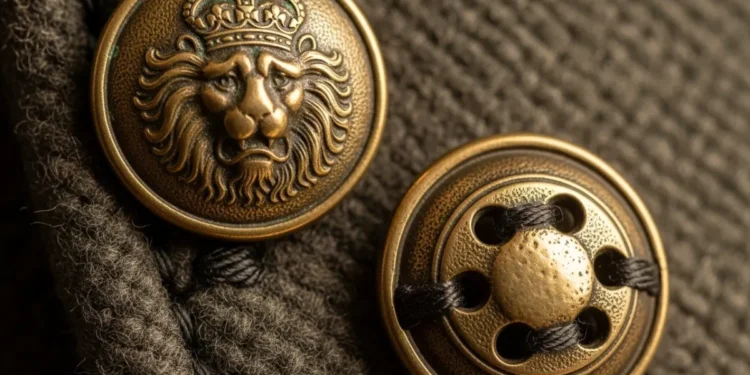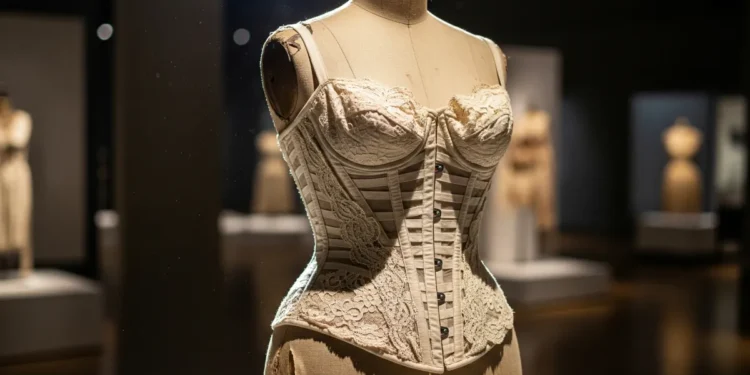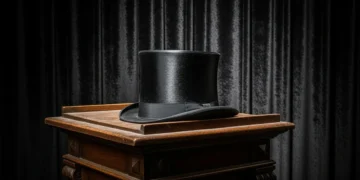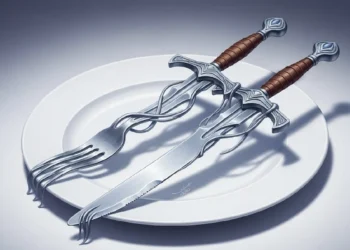Explore the multifaceted significance of buttons in fashion, transcending their role as mere fasteners to embody cultural, political, and personal identities. This article explores the historical evolution of buttons, their influence on gender roles, and their portrayal in societal narratives. From ancient civilizations to contemporary sustainable practices, discover how buttons reflect wealth, power dynamics, and individuality in clothing. Uncover the powerful relationship between fasteners and identity as we trace the intricate history and future possibilities of these small yet transformative elements in our wardrobes.
Table of Contents
Introduction to the Button: More Than Just a Fastener
Buttons are ubiquitous components of clothing, serving as fundamental fasteners that secure garments and enhance functionality. However, their significance transcends mere practicality; the evolution of buttons in clothing has forged a dynamic relationship with various cultural themes, notably in the realms of gender, power, and identity. As small yet impactful elements, buttons have played complex roles throughout history, symbolizing societal norms and reflecting changing attitudes towards fashion and self-expression.
The historical journey of buttons can be traced back to ancient civilizations, where they first emerged as decorative adornments and practical fasteners. Initially crafted from materials such as bone, wood, and metal, buttons have evolved in design and function over millennia. This button history timeline reveals how different cultures have embraced buttons, adapting their styles and usages to suit diverse needs and contexts. In particular, the design of buttons has often mirrored the prevailing fashion trends of the time, while also serving as an expression of individuality and social status.
Notably, buttons have been closely tied to gender roles. Historically, clothing for men and women diverged in their fasteners, often revealing underlying power dynamics. The use of buttons in women’s fashion has frequently been dictated by societal expectations, with their placements and sizes reflecting constraints imposed by gender norms. Conversely, men’s clothing has allowed for more freedom and variety in fastener design, contributing to distinct expressions of masculinity. This divergence illustrates how buttons can encapsulate broader conversations concerning cultural identity and gender expectations.
Furthermore, political symbolism in fashion has often been conveyed through buttons. Throughout history, buttons have been utilized as canvases for political messages, showcasing allegiance and identity. This facet emphasizes their role not just as functional items but as emblematic elements of human expression. The intricate interplay between buttons and societal factors invites a deeper exploration of how these small fasteners have and continue to influence our understanding of identity and culture.
The Origins and Evolution of Buttons
The evolution of buttons in clothing dates back to ancient civilizations, where they served as practical fasteners for garments. The earliest known buttons originated in the Indus Valley civilization around 2000 B.C.E., constructed from materials such as shell, bone, and wood. These rudimentary fasteners were not only functional but also held significant cultural symbols, indicating status and identity within the society.
As time progressed, the materials and designs of buttons evolved, reflecting advancements in technology and changes in societal norms. During the Middle Ages, buttons made from metals and adorned with intricate designs became prominent, especially in Europe, where they transitioned from purely functional items to expressions of wealth and power. This period saw buttons not merely as fasteners but as statements of one’s social standing and fashion sensibilities.
The Renaissance introduced further innovation, leading to the creation of decorative buttons often embedded with gems or made from precious metals. This shift highlights a trend in fashion where buttons and gender roles intersected, with men’s garments featuring larger, more ornate buttons as a representation of masculinity and authority, while women’s clothing often emphasized modesty and virtue with simpler designs. The political symbolism in fashion became evident, as buttons signified allegiance to various movements or class distinctions.
As we moved into the 18th and 19th centuries, the advent of the Industrial Revolution allowed for the mass production of buttons, making them more accessible. This democratization changed how buttons were perceived, as they became not only practical fasteners but also important components of personal identity and social expression. In contemporary fashion, fasteners are often celebrated for their design qualities and the stories they tell about their wearers. The button history timeline illustrates how these small objects, once relegated to the realm of the mundane, have evolved to become powerful signifiers in the broader narrative of self-expression and cultural significance.
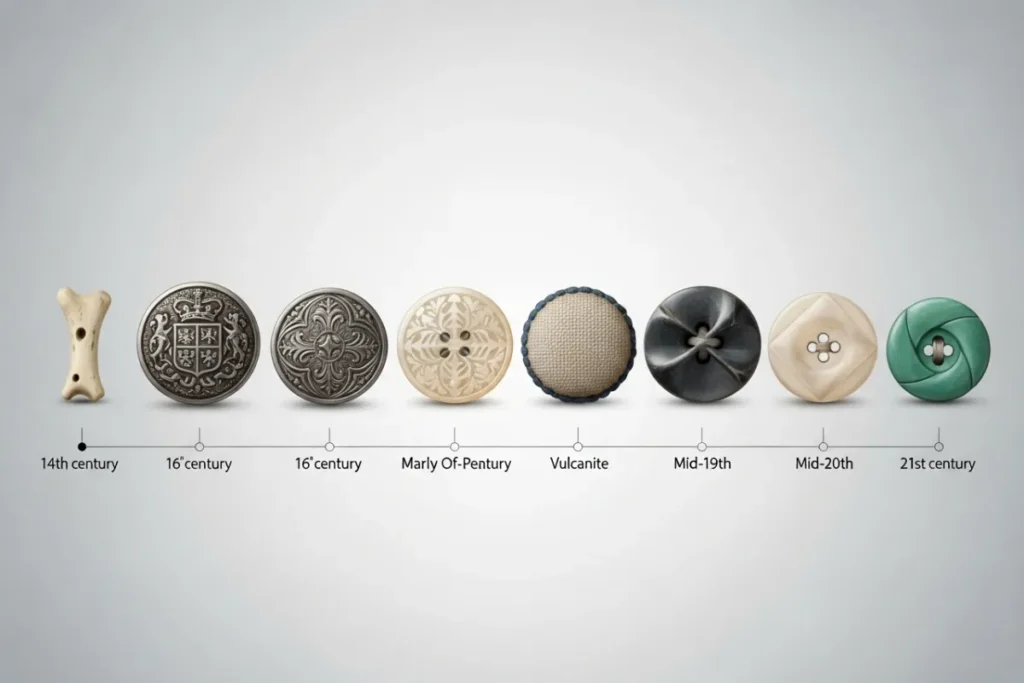
Buttons and Gender: A Symbolic Stitching of Ideals
Throughout history, the evolution of buttons in clothing has been closely intertwined with concepts of gender roles and identities. From their inception, buttons served not only a practical purpose as fasteners but also as symbols that reinforced and challenged societal norms. In earlier centuries, clothing adorned with ornate buttons was a luxury reserved largely for the upper class, often utilized to delineate gender through their design and placement. For example, men’s clothing frequently featured larger, more functional buttons aligned along the right side, while women’s garments tended to have smaller, decorative buttons on the left, signifying different expectations and limitations placed upon the genders.
The historical context surrounding button usage reveals insights into how fasteners and identity have evolved. During the 19th century, as women’s suffrage movements began to gain momentum, button styles also began to shift. Women’s clothing saw an increase in practicality, and the introduction of new fastening techniques provided greater freedom of movement. Designs began to incorporate buttons that not only emphasized women’s emerging roles in society but also reflected their growing independence. The placement and size of buttons became a subtle yet powerful means of expressing newfound identities, underscoring the significance of buttons and gender roles in the era.
Additionally, the symbolic nature of buttons extends to their role as political symbols in fashion. Certain button styles and statements became associated with particular movements, such as the feminist fight for equality, displaying how clothing, through its fasteners, can reflect deeper societal ideals. In modern contexts, the choices surrounding buttons in garments continue to challenge traditional gender norms, allowing individuals to express their identities beyond binary classifications. From their historical origins to contemporary interpretations, the journey of buttons illustrates a complex narrative woven with threads of gender, power, and identity.
The Power Dynamics of Buttons in Fashion
Buttons, often overlooked as mere fasteners in clothing, have historically served as crucial symbols of power, class, and identity. The evolution of buttons in clothing reflects wider societal changes, signifying wealth or status through their materials and embellishments. For instance, during the 17th and 18th centuries, wealthy individuals wore intricate buttons made of precious metals and adorned with gemstones, whereas those of lower economic status wore simpler fasteners. This disparity in button usage not only indicated individual wealth but also the playgrounds of existential class struggles.
Moreover, buttons have played a significant role in the context of political symbolism in fashion. From military uniforms to fashionable apparel, the button has often been leveraged to convey authority and allegiance. For example, the elaborate button designs on military attire serve as indicators of rank and position, reinforcing the hierarchical nature of the armed forces. This hierarchy trickles down into civilian life, where buttons contribute to gender roles in fashion; men, traditionally occupying positions of authority, frequently wore garments with larger, more ostentatious buttons, distinguishing themselves from women’s clothing, which often featured smaller, more refined fasteners.
Additionally, as fashion evolved, so did the utilization of buttons as a medium of expression and dissent. Political movements have strategically employed buttons and gender roles to challenge traditional norms. The suffragette movement, for instance, used clothing featuring specific fasteners to showcase solidarity, thereby asserting their stance on gender equality. This conscious integration of fasteners into politically charged clothing emphasizes how, through the action of buttoning up, individuals can take a stand on important issues, thereby forging a nuanced connection between fasteners and identity. As we delve deeper into this rich button history timeline, it becomes evident that these small yet powerful accessories have, and continue to, shape not just fashion but societal narratives at large.
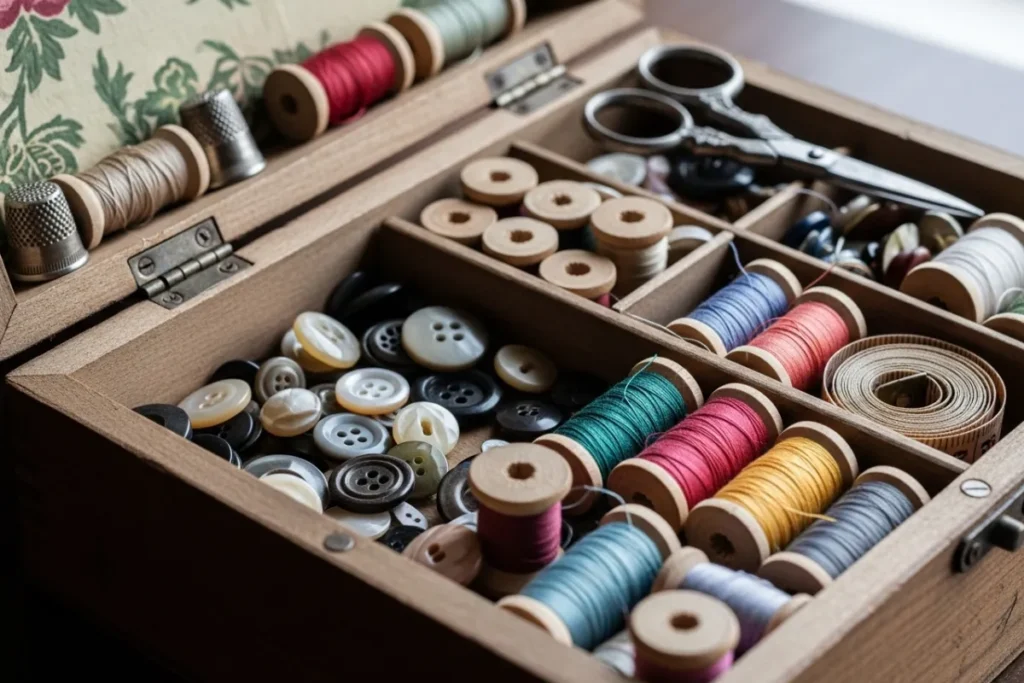
Buttons and Identity: Crafting Personal Narratives
Throughout history, buttons have evolved beyond mere fasteners to become powerful symbols of identity and expression. The evolution of buttons in clothing reflects not only advancements in garment technology but also the intricate relationship between personal narratives and societal norms. As individuals curate their wardrobes, the selection and arrangement of buttons often serve as a form of self-expression, showcasing affiliations, beliefs, and cultural narratives.
In contemporary fashion, buttons have taken on new roles as markers of identity. For many, the choice of button style—be it vintage, modern, or handmade—represents an alignment with specific cultural movements or personal values. For instance, enamel pins or activist buttons are frequently used to make statements about social issues, gender roles, and political symbolism in fashion. These distinct accessories transform clothing into platforms for advocacy, where a simple button expresses a commitment to a cause, thereby crafting a narrative that resonates with both the wearer and the observer.
The arrangement of buttons in clothing can also play a significant role in defining identity. Customized button placements, colors, and designs can indicate affiliations with subcultures or communities, while also challenging traditional norms. The practice of using buttons to denote individuality or collective identity reflects broader themes of fasteners and identity, revealing how something as small as a button can possess substantial meaning. Moreover, the rich history surrounding button design and functionality informs this dialogue, suggesting that our relationship with these simple fasteners is deeply rooted in a shared cultural context.
As we continue to witness the intricate interplay between fashion and identity, it becomes evident that the evolution of buttons in clothing transcends their practical function. Instead, they emerge as vital symbols in the ongoing conversation about personal narratives, cultural affiliations, and the expressive potential inherent in everyday attire.
The Intersection of Buttons and Fashion Trends
Buttons, as fundamental fasteners in the realm of clothing, represent more than mere utility; they serve as indicators of changing fashion trends throughout history. The evolution of buttons in clothing is deeply intertwined with societal shifts, reflecting changes in style, gender roles, and even political symbolism in fashion. As fashion evolved, the design and placement of buttons have played a critical role in defining the silhouette and functionality of garments.
In the 18th century, for instance, buttons transitioned from simple functional objects to ornate embellishments that signified wealth and social status. The introduction of brass and silver buttons highlighted the wearer’s affluence, becoming central to the aesthetics of garments worn in aristocratic circles. This period marked the beginning of the relationship between buttons and visual identity in fashion, where buttons were strategically placed to enhance the formality of attire.
As the 19th century ushered in the Industrial Revolution, the mass production of buttons allowed for greater experimentation with styles and materials. The development of plastic buttons in the 20th century, along with vibrant colors and intricate designs, mirrored the post-war shift towards individual expression in fashion. This transformation lent itself to the concept of fasteners and identity, where buttons facilitated personal style statements rather than simply fulfilling functional roles. The buttons on a garment now could suggest varying affiliations, from political choices to social movements, making them potent symbols of personal and collective identities.
In contemporary fashion, buttons continue to evolve, serving as a medium for creative expression. Designers often manipulate button placements or opt for unconventional fasteners altogether, challenging traditional ideas while still emphasizing the importance of this small yet impactful element in clothing. Thus, the significance of buttons transcends their basic function, marking pivotal moments in fashion history where the evolution of buttons in clothing reflects broader cultural narratives.
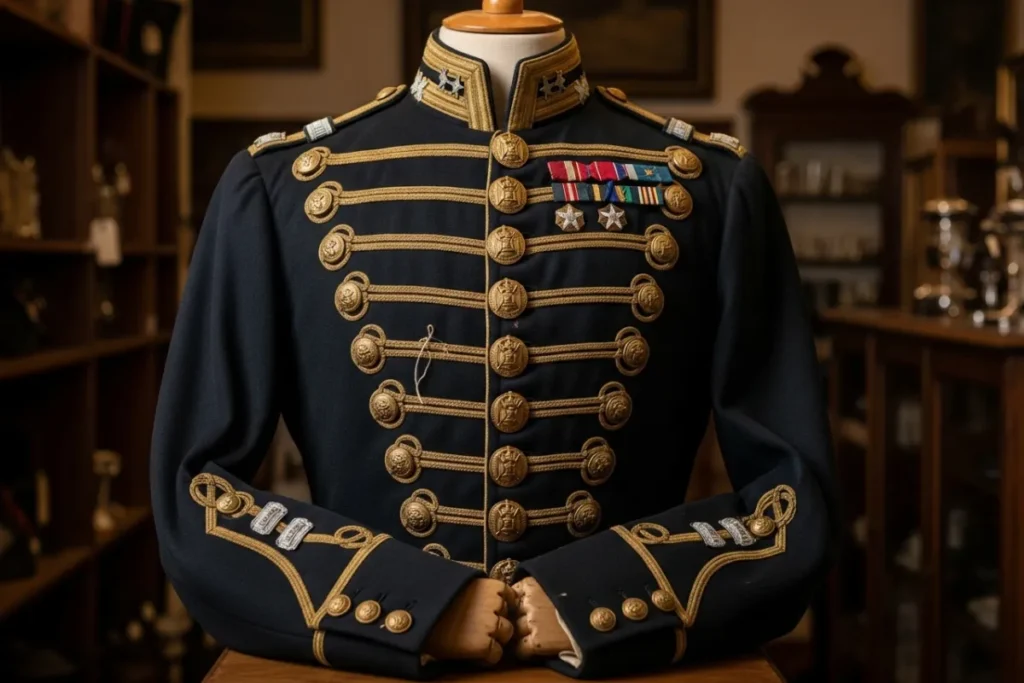
The Role of Buttons in Sustainable Fashion
As the global fashion industry faces increasing scrutiny regarding its ecological footprint, the often-overlooked fastener—the button—has emerged as a potent symbol of sustainability. The evolution of buttons in clothing extends beyond mere aesthetics; it intersects with pressing environmental issues that demand innovative solutions. Traditional button production methods often involve non-renewable resources, like plastic, which has raised concerns about waste and pollution. Consequently, sustainable fashion advocates are re-evaluating the role of buttons by exploring eco-friendly alternatives.
In recent years, designers have begun experimenting with biodegradable materials, such as wood, metal, and even plant-based substances, that align more closely with the principles of sustainable fashion. These innovations challenge traditional notions of fasteners and identity, presenting buttons not just as functional elements but as statements about the wearer’s commitment to sustainability. Through this lens, buttons can actively partake in the discourse surrounding environmental responsibility and conscious consumerism.
Moreover, sustainability in button design aligns with broader movements in the fashion industry that aim to reduce waste through circularity. By focusing on the life cycle of buttons and their ability to be upcycled or reused, designers can address issues of disposability and consumerism. This approach ties into the historical context of buttons, wherein button history timelines reveal their transition from merely being functional fasteners to signifiers of identity and power. For instance, the materials and styles of buttons used can dramatically reflect the cultural identity or socio-economic status of individuals, reinforcing that buttons are more than just fasteners; they are imbued with symbolic meanings.
Incorporating sustainable practices into button production illustrates how even the smallest components of clothing can embody larger narratives about environmental responsibility. As the fashion industry progresses, embracing the evolution of buttons in clothing as sustainable fasteners will be pivotal in redefining fashion’s impact on gender roles, identity, and power dynamics in every garment.
Cultural Variations: Buttons Around the World
Buttons have served multifaceted roles in clothing across the globe, transcending their simple functionality as fasteners. Their significance varies greatly among cultures, influencing everything from status to identity. In many traditional Asian garments, the evolution of buttons in clothing is distinctly pronounced. For instance, the Chinese use of knots and ornamental button closures called “frog buttons” showcases a blend of artistry and symbolism, often representing luck and harmony. This stylistic element has persisted into modern interpretations, illustrating how historical fasteners can shape contemporary fashion choices.
In European cultures, buttons have historically reflected social status. The button history timeline indicates that, during the Renaissance period, the abundance of decorative buttons indicated wealth and nobility, capping off garments of the affluent. In contrast, simpler designs were often utilized by the working class, reinforcing the themes of class and social hierarchy through these small yet significant fasteners. Consequently, the buttons and gender roles became intertwined as garments designed for men and women utilized differing button styles and arrangements to signify societal expectations.
Furthermore, buttons in African attire often carry a weight of political symbolism in fashion. From the intricately sewn buttons on Nigerian traditional outfits to vibrant African prints, these fasteners become a canvas for expressing cultural pride and political statements. Buttons are not merely functional; they resonate with identity and heritage. Similarly, in Indigenous communities, fasteners hold cultural significance, imbued with historical narratives that connect individuals to their ancestry. The diverse applications of buttons speak to their capacity to convey complex themes, including identity, power, and heritage, across varied contexts. Thus, examining buttons as a cultural artifact reveals the depth of their meaning within the fabric of societies worldwide.
| Region / Culture | Historical Role | Modern Impact | Symbolism & Meaning |
|---|---|---|---|
| East Asia (China) | Knots and “frog buttons” as functional closures | Continued use in qipao and fusion fashion | Luck, harmony, and artistry in fasteners |
| Europe (Renaissance) | Decorative buttons showcasing wealth and nobility | High‑end couture and vintage‑inspired designs | Status, class distinction |
| Africa (e.g. Nigeria) | Sewn buttons on traditional garments | Buttons and prints used in political‑statement wear | Cultural pride, political expression |
| Indigenous Communities | Fasteners tied to ancestral dress and storytelling | Revival in heritage‑driven and artisanal fashion | Luck, harmony, artistry in fasteners |
Conclusion
Throughout history, buttons have transcended their role as mere fasteners to become significant cultural artifacts that reflect and influence gender roles, political symbolism in fashion, and individual identity. The evolution of buttons in clothing has mirrored societal changes, from the delicate details in aristocratic garments to the functional designs embraced in contemporary fashion. As we trace the button history timeline, we see how this small object has woven itself into the fabric of personal and collective narratives.
In addition to their practical function in securing garments, buttons often serve as a canvas for expressing values and beliefs. They can symbolize rebellion, conformity, or even social status, underscoring the intricate relationship between fasteners and identity. For instance, during various movements, buttons have been repurposed to convey messages of empowerment and solidarity. Similarly, the design and placement of buttons in clothing have signified gender roles, illustrating how fashion choices can challenge or reinforce societal norms.
As we move forward, the journey of buttons continues to unfold, indicating that there will always be a place for innovation in how we approach fasteners in fashion. Emerging materials and designs may reshuffle the dynamics once more, encouraging discussions about sustainability and inclusivity. This ongoing evolution invites readers to reflect on their relationship with buttons, prompting them to consider not just the practical use of these fasteners but also their implications regarding power and identity in society.
In conclusion, buttons are more than simple closures; they are potent symbols intertwined with culture, politics, and personal expression. As the fashion industry evolves, so too will our understanding and use of these vital components of clothing, ensuring that buttons will continue to play a meaningful role in shaping societal dynamics in the future.
